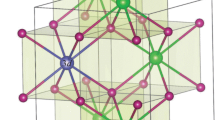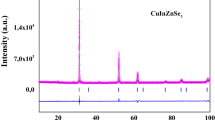The temperature dependences of attenuation and the velocity of ultrasonic waves at frequencies of 26–158 MHz in a CaF2 fluorite crystal at the substitution of Jahn–Teller Cr2+ centers for calcium ions have been studied. An abnormally high relaxation rate, which is two orders of magnitude higher than the relaxation rate in other previously studied CaF2:Ni2+ and SrF2:Cr2+ fluorites, has been found in the system of Jahn–Teller complexes in the low-temperature region. It has been shown that the global minima of the adiabatic potential energy surface of the Cr2+\({\text{F}}_{8}^{ - }\) complexes in the CaF2:Cr2+ crystal also have orthorhombic symmetry but are separated by significantly lower potential energy barriers than in CaF2:Ni2+ and SrF2:Cr2+ crystals. It has been found that tunneling relaxation mechanisms (direct and two-phonon transitions) are dominant, rather than thermal activation, in CaF2:Cr2+ in the temperature range where the Jahn–Teller effect is manifested in an ultrasonic experiment. The parameters characterizing these relaxation mechanisms have been determined.



Similar content being viewed by others
REFERENCES
H. A. Jahn and E. Teller, Proc. R. Soc. A 161, 220 (1937).
I. B. Bersuker, J. Phys.: Conf. Ser. 833, 012001 (2017).
M. Acosta, N. Novak, V. Rojas, S. Patel, R. Vaish, J. Koruza, G. A. Rossetti, and J. Rödel, Appl. Phys. Rev. 4, 041305 (2017).
M. D. Kaplan and G. O. Zimmerman, J. Phys.: Conf. Ser. 833, 012007 (2017).
D. Liu, N. Iwahara, and L. F. Chibotaru, Phys. Rev. B 97, 115412 (2019).
J. L. Dunn and E. Rashed, J. Phys.: Conf. Ser. 1148, 012003 (2018).
Yu. S. Orlov, S. V. Nikolaev, S. G. Ovchinnikov, and A. I. Nesterov, JETP Lett. 112, 250 (2020).
H. Koizumi, J. Phys.: Conf. Ser. 833, 012016 (2017).
S. Merten, O. Shapoval, B. Damaschke, K. Samwer, and V. Moshnyaga, Sci. Rep. 9, 2387 (2019).
V. Polinger and I. B. Bersuker, J. Phys.: Conf. Ser. 833, 012012 (2017).
M. Angeli, E. Tosatti, and M. Fabrizio, Phys. Rev. X 9, 041010 (2019).
A. V. Kuzmin, S. S. Khasanov, K. P. Meletov, and R. P. Shibaeva, J. Exp. Theor. Phys. 128, 878 (2019).
K. M. Krasikov, A. N. Azarevich, V. V. Glushkov, A. L. Khoroshilov, A. V. Bogach, N. Yu. Shitsevalova, V. B. Filippov, and N. E. Sluchanko, JETP Lett. 112, 413 (2020).
M. D. Sturge, The Jahn–Teller Effect in Solids, Vol. 20 of Solid State Physics, Ed. by F. Seitz, D. Turnbull, and H. Ehrenreich (Academic, New York, London, 1968), p. 91.
W. Ulrici, Phys. Status Solidi 84, K155 (1977).
M. M. Zaripov, V. F. Tarasov, V. A. Ulanov, G. S. Shakurov, and M. L. Popov, Phys. Solid State 37, 437 (1995).
P. B. Oliete, V. M. Orera, and P. J. Alonso, Phys. Rev. B 53, 3047 (1996).
P. B. Oliete, V. M. Orera, and P. J. Alonso, Phys. Rev. B 54, 12099 (1996).
S. K. Hoffmann, J. Goslar, S. Lijewski, and V. A. Ulanov, J. Chem. Phys. 127, 124705 (2007).
V. V. Gudkov, in The Jahn–Teller Effect: Fundamentals and Implications for Physics and Chemistry, Ed. by H. Koppel, D. R. Yarkony, and H. Barentzen (Springer, Berlin, Heidelberg, 2009), p. 743.
M. N. Sarychev, W. A. L. Hosseny, A. S. Bondarevskaya, I. V. Zhevstovskikh, A. V. Egranov, O. S. Grunskiy, V. T. Surikov, N. S. Averkiev, and V. V. Gudkov, J. Alloys Compd. 848, 156167 (2020).
N. S. Averkiev, I. B. Bersuker, V. V. Gudkov, I. V. Zhevstovskikh, M. N. Sarychev, S. Zherlitsyn, S. Yasin, Yu. V. Korostelin, and V. T. Surikov, J. Exp. Theor. Phys. 129, 72 (2019).
J. J. Krebs and G. H. Stauss, Phys. Rev. B 16, 971 (1977).
G. H. Stauss, J. J. Krebbs, and R. L. Henry, Phys. Rev. B 16, 974 (1977).
J. T. Vallin and G. T. Watkins, Phys. Rev. B 9, 2051 (1974).
J. Dziesiaty, P. Peka, M. U. Lehr, A. Klimakow, S. Muller, and H.-J. Schulz, Z. Phys. Chem. 201, 63 (1997).
M. M. Zaripov, V. F. Tarasov, V. A. Ulanov, G. S. Shakurov, and M. L. Popov, Phys. Solid State 37, 437 (1995).
M. M. Zaripov, V. F. Tarasov, V. A. Ulanov, and G. S. Shakurov, Phys. Solid State 38, 249 (1996).
M. M. Zaripov, V. F. Tarasov, V. A. Ulanov, and G. S. Shakurov, Phys. Solid State 44, 2050 (2002).
P. B. Oliete, V. M. Orera, and P. J. Alonso, J. Phys.: Condens. Matter 8, 6797 (1996).
P. B. Oliete, C. A. Bates, and J. L. Dunn, J. Phys.: Condens. Matter 11, 2579 (1999).
V. V. Gudkov, I. B. Bersuker, I. V. Zhevstovskikh, Yu. V. Korostelin, and A. I. Landman, J. Phys.: Condens. Matter 23, 115401 (2011).
N. S. Averkiev, I. B. Bersuker, V. V. Gudkov, I. V. Zhevstovskikh, M. N. Sarychev, S. Zherllitsyn, S. Yasin, G. S. Shakurov, V. A. Ulanov, and V. T. Surikov, in Fluorite: Structure, Chemistry and Applications, Ed. by M. van Asten (Nova Science, New York, 2019), Chap. 2, p. 111.
I. V. Zhevstovskikh, I. B. Bersuker, V. V. Gudkov, N. S. Averkiev, M. N. Sarychev, S. Zherlitsyn, S. Yasin, G. S. Shakurov, V. A. Ulanov, and V. T. Surikov, J. Appl. Phys. 119, 225108 (2016).
Funding
The work at the Ural Federal University was supported by the Russian Foundation for Basic Research (project no. 18-02-00332а); by the Center of Excellence “Radiation and Nuclear Technologies,” Ural Federal University; and by the Ministry of Science and Higher Education of the Russian Federation (state task no. FEUZ-2020-0060). The work at the South Ural State University was supported by the Government of the Russian Federation (act no. 211, contract no. 02.A03.21.0011, project 5-100). The study at the Institute of Metal Physics, Ural Branch, Russian Academy of Sciences, was supported by the Ministry of Science and Higher Education of the Russian Federation (state task no. AAAA-A18-118020190098-5).
Author information
Authors and Affiliations
Corresponding author
Additional information
Translated by L. Mosina
Rights and permissions
About this article
Cite this article
Sarychev, M.N., Bondarevskaya, A.S., Zhevstovskikh, I.V. et al. Tunneling Relaxation Mechanisms of the Jahn–Teller Complexes in a CaF2:Cr2+ Crystal. Jetp Lett. 113, 47–51 (2021). https://doi.org/10.1134/S0021364021010082
Received:
Revised:
Accepted:
Published:
Issue Date:
DOI: https://doi.org/10.1134/S0021364021010082




